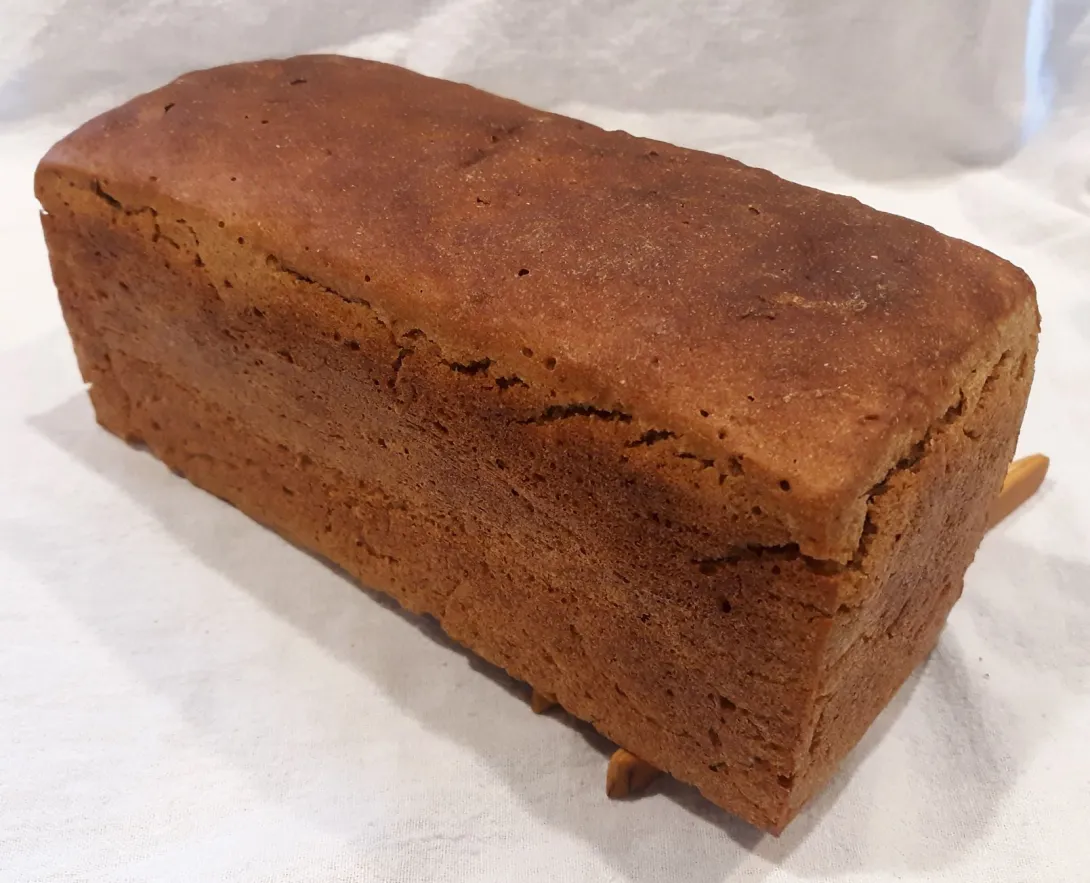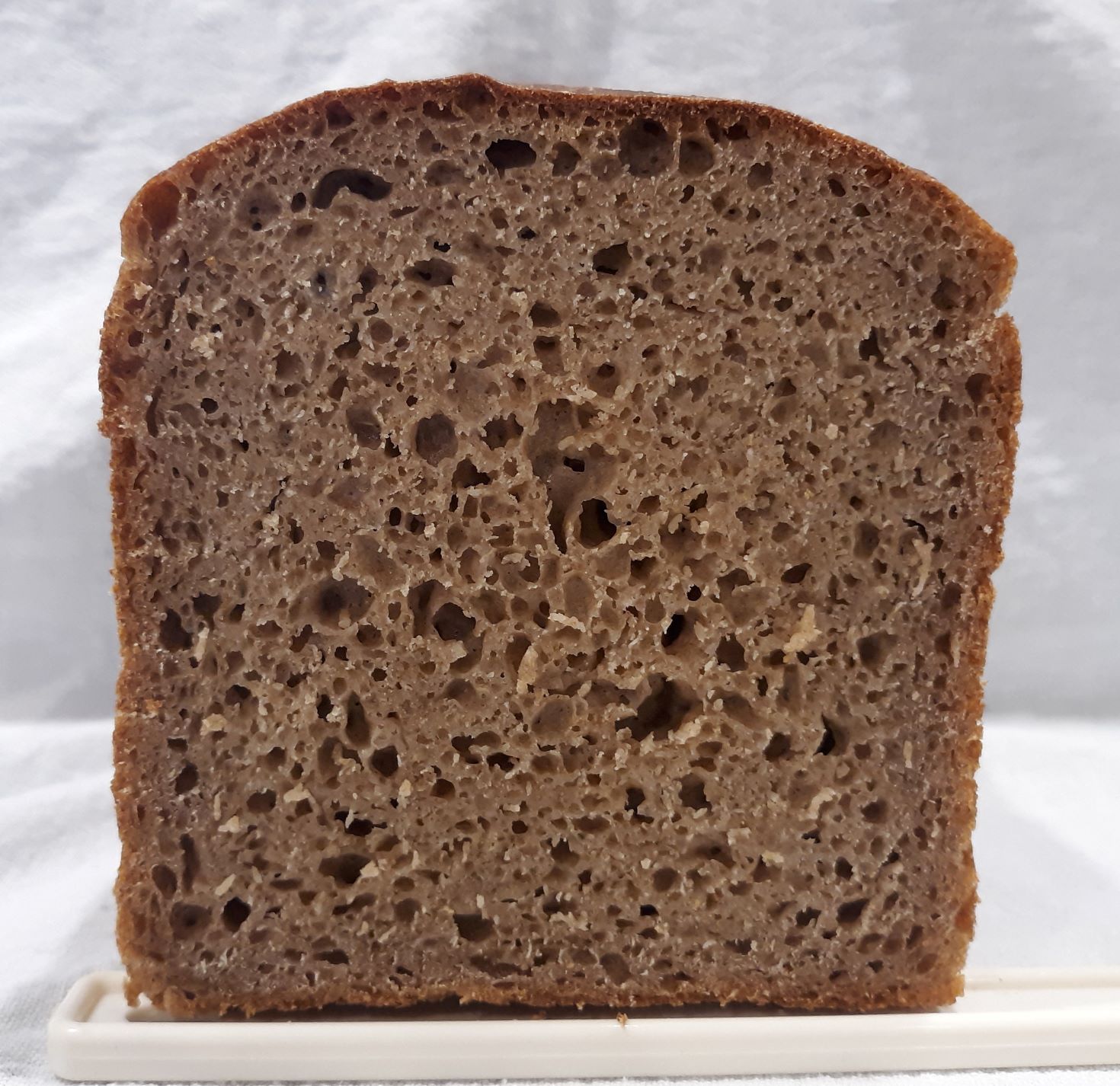
I made this 100% rye bread following this video from the WSU Bread Lab the @Abe posted a few days ago. I misremembered the total baking time (60–75 min) from the video: I remembered the time of the second stage as the total time of the bake.
I checked the loaf after about 46 min. The loaf sounded hollow when tapped and the crumb temperature measured 96 °C (205 °F), so I judged it to be done. But when I watched the video again, I realized I may have under baked it.
I would hate to cut into it and find that I should have baked it longer. Should I pop it back in the oven to complete the baking?The crust is plenty dark for my taste but I don't want a gummy crumb.
Dietmar Kappl discusses the Twice Baked Bread method for rye breads and I'm wondering if I should try this with this loaf.
Thanks!
P.S.
Here's a much belated crumb shot of the above rye loaf:

10% weight loss should be enough. If it was 1000g before bake and is 900g now (hot, not cooled down yet), then it is done.
If it is still sticky inside it might be due to the quality of the rye flour and or fermentation/acidity level, but not due to underbaking per se.
It had ≈11% loss measured while it was still warm, but not immediately out of the oven. After full cooling, it had a 12–13% loss. I guess I'll take a chance and slice it later today.
Is the 10% loss a good rule of thumb for ryes only, or can it be used for other breads?
As always, you are a great help! Thanks!
Yes, usually, parbaked goods like parbaked baguettes that are later finished baking is grocery stores or twice baked bread as in your linked article are baked to 6-7% weight loss - not raw inside, but very pale, underbaked. So, 10% is a safe zone. Moisture evaporation during the forst hour after baking makes for another 3-5% weight loss.
Very crusty breads, as in French tradition, baguettes etc., and high hydration breads with creamy crumb such as ciabattas, Tartine, etc., are baked to 15-25% weight loss, but it does not affect the crumb moistness, creaminess or stickiness per se, only the crust and, therefore, bread aroma.
Bakers know these rules to determine the weight of a raw dough portion per loaf to bake a loaf of pre-determined weight for sale.
Rye breads are large, sometimes very large, 6-10lbs loaves are a norm for them, so they lose much less water as they bake for a long time at the lower temp.
I would just stick to the 10% (or more, if I want a really thick and sturdy crust for some reason) rule. It works regardless of the size of the loaf. It's just a 10% baking weight loss for a cute 1lb rye will mean thin crust and for a 10lb giant a much thicker crust. Inside, both will be well done.
Can also be applied here. It taps hollow and you got the desired temperature so it should be baked through properly. Though I can't see any harm in putting it back in the oven until it is as dark as you're prepared to go to minimise any chance of a gummy crumb. Whatever the case i'm sure it's turn out just fine. Looks like you got a good rise, nice colour and hopefully a crumb you're after. Should you not wish to cut put it back in the oven then avoid cutting into it for 24 hours and if by then you find it is gummy put it back in the oven for 10 minutes. I've done that even a day after the bake. And worse comes to the worse eat it toasted.
If its undercooked, unlikely from the sound of it, you can freeze then microwave (if you have a microwave) toasting thin slices works too. If it's gummy from lack of acidity (starch attack - doesn't sound like that's the case here) not a lot you can do to fix.
Leave it in a warm oven, or store it overnight in a ziplock bag, or both.
The first option drives off moisture, the second distributes residual moisture evenly to avoid dry chewy crust and wet, gummy middle. Doing both is what I would do - drive off excess moisture, and ensure what remains is evenly distributed.
If you haven't baked this recipe before, slice it and see what you have. Next time adjust as necessary.